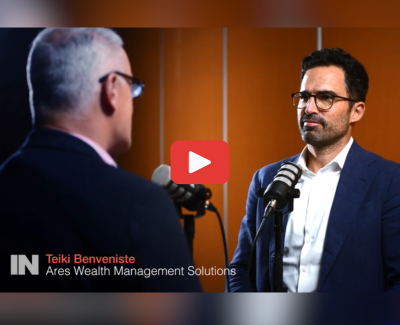Video: Why it’s important to “time” your credit exposure (but not how you might think)
The following was produced and published by Livewire on 10 May 2022.
For the last 12 months(1), fixed-rate credit assets have missed the mark, but floating rate has faired better irrespective of credit quality*. Ares Australia Management’s Teiki Benveniste explains why.
“Amid higher inflation and rising rates, the only way assets with fixed coupons can reflect these conditions is through their prices,” he says.
On the other hand, floating-rate coupons (your investment yield) readjust every one to three months. All things being equal, if interest rates rise, so does the coupon.
These characteristics have been clearly demonstrated over the last 12 months(1) as fixed-rate assets underperformed floating-rate assets.
Benveniste explains that there’s a deeper distinction within the fixed rate universe. And that’s duration – whether you’re invested in three- or five-year bonds or perhaps in 10-, 20- or 30-year assets. It’s a way of timing your exposure – though not in the way some equity investors try to time their entry or exit points.
“Investment-grade has underperformed sub-investment-grade, and that’s because IG has about eight years of interest rate duration when high yield has about four years,” he says.
In the video above, Benveniste explains the differences between fixed- and floating-rate credit, outlines how changes in rates affect their performance and discusses how Ares Australia Management is positioned.
(1) As at 31 January 2022
*As highlighted by the performance of the Bloomberg Global Aggregate ex Treasury Index hedged into AUD, composed of mainly IG fixed rate bonds vs. the CS Leverage Loan Index which is composed mainly of floating rate instruments.
Disclaimer – Fidante Partners
Fidante Partners Limited ABN 94 002 835 592 AFSL 234668 (Fidante), a member of the Challenger Limited group of companies (Challenger Group), has entered into arrangements with Ares and Ares Australia Management Pty Ltd ABN 51 636 490 732 (AAM), in connection with the distribution and administration of financial products managed by Ares or AAM. In connection with those arrangements, Fidante or AAM may receive remuneration or other benefits. Neither Fidante nor AAM nor any of their associates are responsible for the information in this material, including any statements of opinion and accept no liability whatsoever in relation to it. AAM is an Authorised Representative No. 001280423 of Fidante and is in the process of seeking its own Australian Financial Services Licence. Ares is exempt from the requirement to hold an Australian Financial Services Licence. Ares is subject to regulation by the Securities & Exchange Commission of the United States of America under US laws, which differ from Australian laws. This publication is only made available to ‘wholesale clients’ or ‘sophisticated investors’ under the Corporations Act 2001 (Cth) in Australia. Fidante is not an authorised deposit-taking institution (ADI) for the purpose of the Banking Act 1959 (Cth), and its obligations do not represent deposits or liabilities of an ADI in the Challenger Group (Challenger ADI) and no Challenger ADI provides a guarantee or otherwise provides assurance in respect of the obligations of Fidante. Investments in the Fund(s) are subject to investment risk, including possible delays in repayment and loss of income or principal invested. Accordingly, the performance, the repayment of capital or any particular rate of return on your investments are not guaranteed by any member of the Challenger Group.


